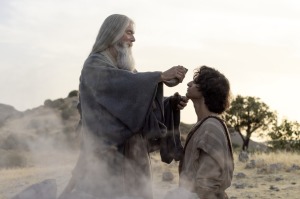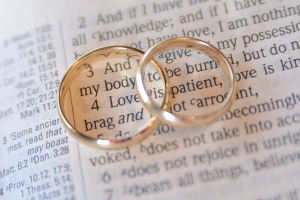Art is doxology

I was recently engaged in a conversation with a fellow-Christian regarding a mutual friend opening an art studio. On telling him that I was eager to check out the studio, he frowned with a quizzical expression and then went on to rant about the "silliness" of art and why people should not be wasting their time staring at "meaningless" pictures or "boring" works of art because there was nothing practically useful that could come out of it and thereby, it was simply a waste of time and effort. I laughed off his comment in the moment but later that afternoon I had to ask myself if what he thought was true.
Was art truly meaningless? Surely he could not have meant all art! Is there a latent silliness to art that gets washed over by overstated profundity? Have humans been wasting their time through the ages creating art for themselves and future generations?
The more I thought about it, the more I came to the conclusion that my "anti-art" friend was very mistaken. But he had inadvertently planted some self-reflective questions in my mind — What did Christianity have to say about the arts? Is there room for meaningful introspection regarding the overlap of theology and artistic endeavors? The late great philosopher and cultural prophet, Francis Schaeffer stated that, "The Christian's life is to be a thing of truth and also a thing of beauty in the midst of a lost and despairing world."
Art communicates (or at least attempts to communicate) truth and beauty. But my focus here is not necessarily to dwell on the "what" it is that art communicates but "why" humans have been inspired since time immemorial to create works of art. And I want to draw attention to at least three reasons (there are more) why art matters but why it must especially matter to Christians.
'Creators' Created by the Creator
When Christianity says that human beings are made in the image of God, it implies that we share certain traits with the God that created us. While there are traits that are unique to God alone (incommunicable attributes), there are other traits we possess that God also possesses (communicable attributes). The holy scriptures begin with the magnificent narrative of creation where God speaks reality into existence. He then steps back and calls it "good."
This is primarily why humans do what they do when they create art — they are "creators" that possess the artistic DNA of their own Creator. We love to make, model, shape, form, chisel, carve, draw, paint and mold into reality, creations that we perceive as beautiful, inspiring or necessary. And we frame it, put it on a pedestal, in a glass case or showcase it at a gallery, precisely because we consider it "good." While our art is certainly not immune from the effects of our fallenness (because there is such a thing as bad art), the impulse to create beautiful things is part of what makes us human.
The Longing for Eternity
A recent Internet Trends report stated that on average, people uploaded nearly 1.8 billion digital pictures every day; that's 657 billion photos a year! And those are just the uploaded ones, not including the pictures stored on people's computers and personal devices. Why do we love pictures so much? A picture (or painting) captures a particular moment in history, makes it impervious to the passage of time and is something we can return to, to enjoy later and reminisce on for our own pleasure.
We seem to recognize that things don't last forever in this world we live in and there are events, incidents or moments that we wish would in fact last forever. We desire to freeze that moment in time so that it will, in some manner of the word, not succumb to the "atrophy of time." But where did this impulse for something to last forever, come from?
In Ecclesiastes 3:11, it says that God made everything "beautiful in its time" but He also put "eternity into our hearts." And this is not only evident in art but even in our technological endeavors — cosmetic surgery attempts to retain youthful looks beyond its time, cryogenic advancements attempt to slow down (and even stop) the natural aging process, etc. We long to be immutable, for our lives to be unchanging and for our achievements (such as art) to not succumb to the passing of time. We do this because deep down, we desire eternality. We desire it because our eternal God put it there.
Posterizing Truth & Beauty
As human beings made in the image of God, we cannot help but be captivated by the reality of truth and beauty around us. C.S. Lewis says, "Nature never taught me thatthere exists a God of glory and of infinite majesty. I had to learn that in other ways. But nature gave the word 'glory' meaning for me. I still do not know where else I could have found one." Subsequently elsewhere, Lewis concludes, "Our desire is to not only SEE glory but to participate in the glory we see."
The great masters of old — Michelangelo, Picasso, Van Gogh, Monet and Rembrandt — were all so captivated by the "truth of beauty" and the "beauty of truth" around them, that they spent their lives expressing those realities on canvas. There is a reason why year after year, people flock to visit the Grand Canyon, Victoria Falls, the Pyramids or the Taj Mahal. Whether it is a natural wonder or a man-made wonder, we cannot help but admire the "glory" of it; but we cannot help but feel the need to participate in it as well. And we participate by gazing at it breathlessly, taking a picture or painting it on canvas. Deep down within us, there is a subconscious hunger that deeply desires to capture truth and beauty tangibly even if we are not able to capture those mentally or spiritually.
Art has existed since the beginning of time and will continue to exist for a long time ahead. This is because art is reflective of the conscious pursuit of truth, the desire to protect beauty and the joy of celebrating its glory. When we participate in the work of art or in the enjoyment of art, we are expressing, albeit subconsciously, a sense of worship, awe, admiration, praise and gratitude; we mimic our Maker and acknowledge Him by doing so. Art is not merely a form, design, shape, color or drawing. Art is doxology




























